
Tanakia is a genus of cyprinid fish, consisting of seven species that occur in Eastern Asia. The type species is the Tanakia limbata.

The Richardiidae are a family of Diptera in the superfamily Tephritoidea.
Autophila limbata is a moth of the family Noctuidae first described by Otto Staudinger in 1871. It is found in southern France, southern Italy, the Iberian Peninsula, Greece, the Crimea, the Near East, Iran, Transcaucasia and Turkmenistan.

Phycosecidae is a family of beetles in the superfamily Cleroidea., containing the single genus Phycosecis found in Australia, New Caledonia, New Zealand and Vanuatu. The beetles are small, about 1.5–3.5 mm in length. They live in sandy coastal areas, and are saprophagous, feeding on faeces, carrion, and dead arthropods during the daytime.
Lepipaschia limbata is a species of snout moth in the genus Lepipaschia. It was described by Jay C. Shaffer and M. Alma Solis in 1994. It is known from Burkina Faso, West Africa.
Eupithecia limbata is a moth in the family Geometridae. It is found in Italy, France, Slovenia, North Macedonia, Greece and Bulgaria. It is also found in Iran.
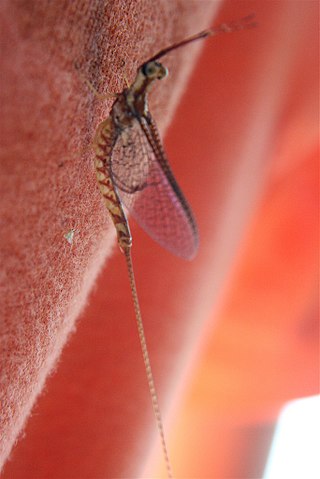
Hexagenia limbata, the giant mayfly, is a species of mayfly in the family Ephemeridae. It is native to North America where it is distributed widely near lakes and slow-moving rivers. The larvae, known as nymphs, are aquatic and burrow in mud and the adult insects have brief lives. They are often referred to as fish flies around the Great Lakes as they tend to cause the areas around water to smell like rotten fish.

Chrysina limbata is a species of scarab beetle found only in mid-altitude forests in Costa Rica and western Panama. It is in the genus Chrysina, in the subfamily Rutelinae. It is notable for its metallic reflective silver color.
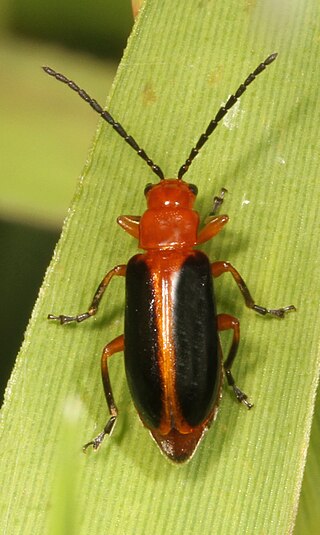
Phyllobrotica limbata is a species of skeletonizing leaf beetle in the family Chrysomelidae. It is found in North America.

Anacaena limbata is a species of water scavenger beetle in the family Hydrophilidae. It is found in Europe and Northern Asia and North America.
Cicindela limbata, the sandy tiger beetle, is a species of flashy tiger beetle in the family Cicindelidae. It is found in North America.
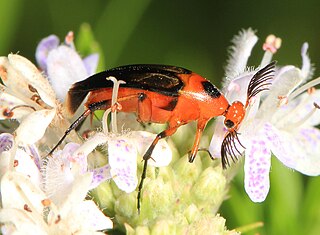
Macrosiagon limbata is a species of wedge-shaped beetle in the family Ripiphoridae. They are found across the Eastern United States, Southeastern Canada and Central America. It is likely that their range extends into South America but this currently remains unknown.
Pycnopsyche limbata is a species of northern caddisfly in the family Limnephilidae, which lives in North America.

Messua limbata is a species of jumping spider in the family Salticidae. It is found in the southern United States and Mexico.
Odontomera ferruginea is a species of fly in the family Richardiidae.
Odontomera is a genus of flies in the family Richardiidae. There are about 19 described species in Odontomera.

Phenolia is a genus of sap-feeding beetles in the family Nitidulidae. There are about nine described species in Phenolia.
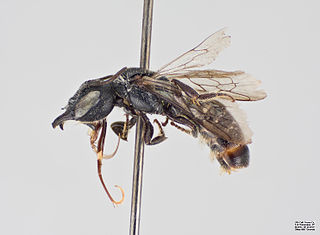
Protosmia is a genus of subgenus Chelostomopsis in the family Megachilidae. There are more than 30 described species in Protosmia.
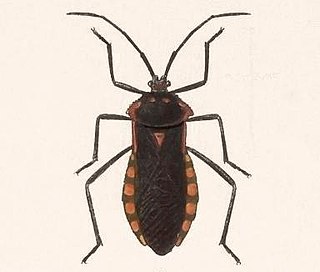
Sephina is a genus of leaf-footed bugs in the family Coreidae. There are more than 20 described species in Sephina.

Pardillana limbata, the common pardillana, is a species of short-horned grasshopper in the family Acrididae. It is found in Australia.












